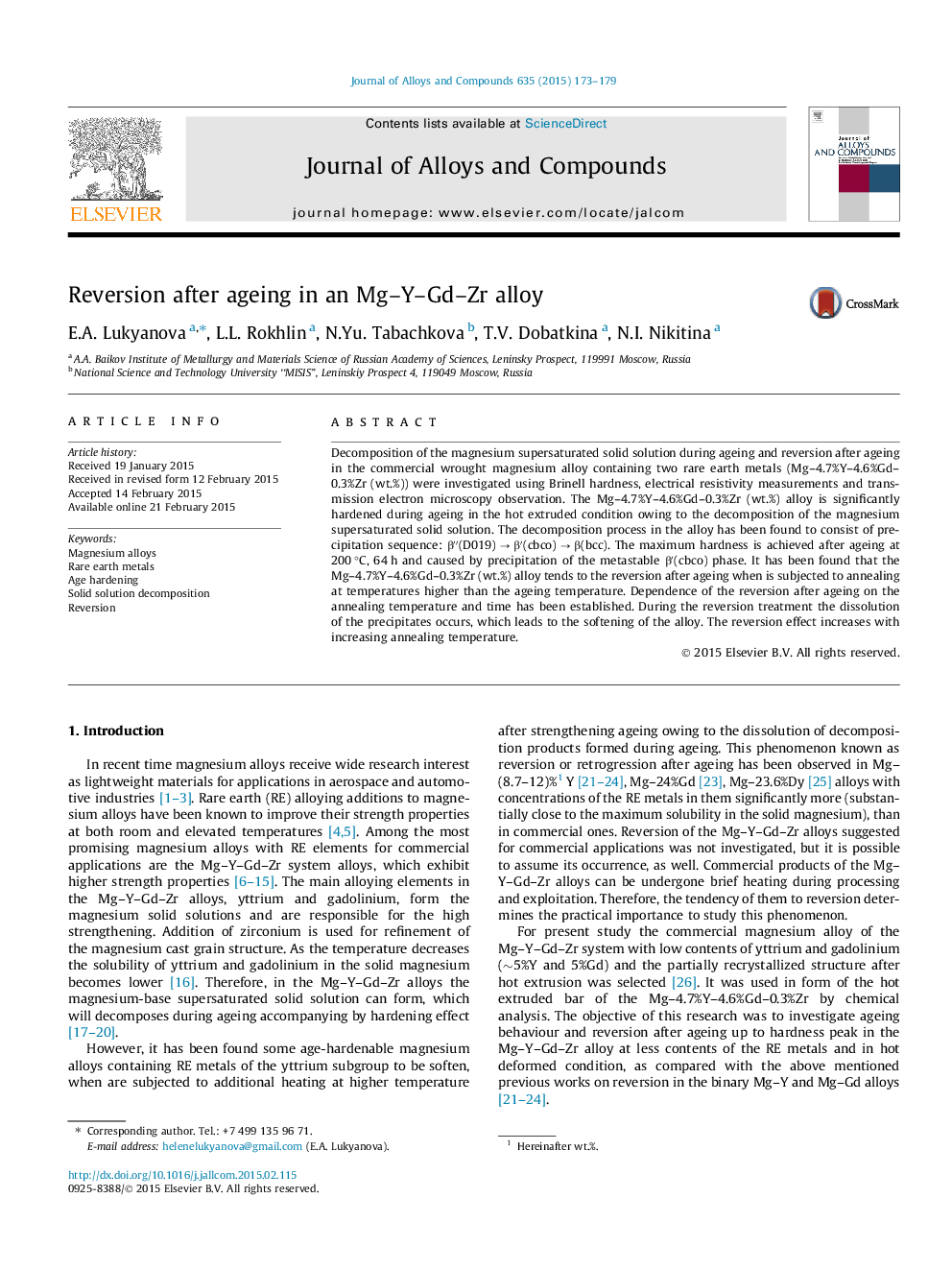| Article ID | Journal | Published Year | Pages | File Type |
|---|---|---|---|---|
| 1609161 | Journal of Alloys and Compounds | 2015 | 7 Pages |
Abstract
Decomposition of the magnesium supersaturated solid solution during ageing and reversion after ageing in the commercial wrought magnesium alloy containing two rare earth metals (Mg-4.7%Y-4.6%Gd-0.3%Zr (wt.%)) were investigated using Brinell hardness, electrical resistivity measurements and transmission electron microscopy observation. The Mg-4.7%Y-4.6%Gd-0.3%Zr (wt.%) alloy is significantly hardened during ageing in the hot extruded condition owing to the decomposition of the magnesium supersaturated solid solution. The decomposition process in the alloy has been found to consist of precipitation sequence: βâ³(D019) â βâ²(cbco) â β(bcc). The maximum hardness is achieved after ageing at 200 °C, 64 h and caused by precipitation of the metastable βâ²(cbco) phase. It has been found that the Mg-4.7%Y-4.6%Gd-0.3%Zr (wt.%) alloy tends to the reversion after ageing when is subjected to annealing at temperatures higher than the ageing temperature. Dependence of the reversion after ageing on the annealing temperature and time has been established. During the reversion treatment the dissolution of the precipitates occurs, which leads to the softening of the alloy. The reversion effect increases with increasing annealing temperature.
Related Topics
Physical Sciences and Engineering
Materials Science
Metals and Alloys
Authors
E.A. Lukyanova, L.L. Rokhlin, N.Yu. Tabachkova, T.V. Dobatkina, N.I. Nikitina,
